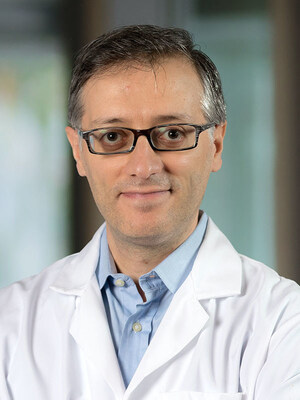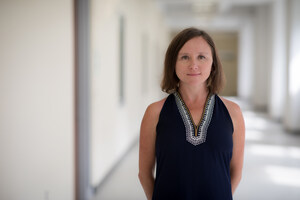BRONX, N.Y., Sept. 21, 2012 /PRNewswire/ -- Primary care physicians – America's front line healthcare practitioners – are usually the first to diagnose illness, refer patients to specialists and coordinate care. Yet, despite that critical role, primary care physicians remain among the lowest paid of all doctors at a time when there's an acute primary care shortage.
(Logo: http://photos.prnewswire.com/prnh/20120531/DC16559LOGO )
A unique longitudinal study of medical students by researchers at Albert Einstein College of Medicine of Yeshiva University, the Brody School of Medicine at East Carolina University, and North Carolina State University shows how significantly both student debt and income expectations impact the decision of medical students to enter a high-paying specialty rather than primary care.
The study, published online on September 19 in Medical Education, surveyed more than 2,500 medical students attending either New York Medical College or the Brody School of Medicine. Over an 18-year period from 1992 to 2010, students were surveyed in their first and fourth years about the area of medicine they planned to enter, their anticipated debt upon graduation, the annual income they anticipated five years after completing residency, and the importance they placed on income in general.
The study indicates that medical students who anticipated high levels of debt upon graduation and placed a premium on high income were more likely to enter a high-paying medical specialty – such as radiology, anesthesiology or dermatology – than to enter primary care, which consists of internal medicine, pediatrics and family practice.
According to a 2010 Medical Group Management Association income survey, primary care physicians earned nearly $200,000 per year and those in 12 high-paying specialties selected by the researchers earned double that, with an average of just under $400,000 per year.
"The income gap between primary care and specialty physicians started growing in earnest in 1979, and now we're seeing the consequences of that ongoing trend," noted Martha Grayson, M.D., senior associate dean of medical education at Einstein and the study's lead author. (Dr. Grayson was at New York Medical College at the time of the study.)
Among those surveyed in the study, 30 percent of students who entered medical school intending to become a primary care physician switched their preference to a high-paying specialty by the time they graduated. Compared to classmates who didn't change their minds about entering primary care, the switching group placed a significantly higher value on income and expected a debt load that was 11 percent greater than those who ultimately chose a primary care career.
Based on an Association of American Medical Colleges survey of residents and fellows taken in 2010, 86 percent of medical students graduated with some education debt in 2010. The average debt was $158,000. Thirty percent of graduates had debt exceeding $200,000. "While the amount of debt medical students take on is well-known, there hasn't been much research to assess how students respond to this pressure," said Dr. Grayson.
The study suggests that measures should be explored to encourage primary care careers such as incentive pay, debt forgiveness, additional scholarships and higher reimbursement for primary care services, in order to meet the growing need.
The study's findings come as the Association of American Medical Colleges (AAMC) projects a shortage of 63,000 physicians by 2015, the vast majority of those in primary care.
The paper is titled "Payback Time: The Association of Debt and Income with Medical Student Career Choice." In addition to Dr. Grayson, the other authors are Dale Newton, M.D., at East Carolina University, and Lori Foster Thompson, Ph.D., at North Carolina State University. The authors report no conflicts of interest.
About Albert Einstein College of Medicine of Yeshiva University
Albert Einstein College of Medicine of Yeshiva University is one of the nation's premier centers for research, medical education and clinical investigation. During the 2011-2012 academic year, Einstein is home to 724 M.D. students, 248 Ph.D. students, 117 students in the combined M.D./Ph.D. program, and 368 postdoctoral research fellows. The College of Medicine has 2,522 full time faculty members located on the main campus and at its clinical affiliates. In 2011, Einstein received nearly $170 million in awards from the NIH. This includes the funding of major research centers at Einstein in diabetes, cancer, liver disease, and AIDS. Other areas where the College of Medicine is concentrating its efforts include developmental brain research, neuroscience, cardiac disease, and initiatives to reduce and eliminate ethnic and racial health disparities. Its partnership with Montefiore Medical Center, the University Hospital and academic medical center for Einstein, advances clinical and translational research to accelerate the pace at which new discoveries become the treatments and therapies that benefit patients. Through its extensive affiliation network involving Montefiore, Jacobi Medical Center – Einstein's founding hospital, and five other hospital systems in the Bronx, Manhattan, Long Island and Brooklyn, Einstein runs one of the largest post-graduate medical training programs in the United States, offering approximately 155 residency programs to more than 2,200 physicians in training. For more information, please visit www.einstein.yu.edu and follow us on Twitter @EinsteinMed.
SOURCE Albert Einstein College of Medicine
WANT YOUR COMPANY'S NEWS FEATURED ON PRNEWSWIRE.COM?
Newsrooms &
Influencers
Digital Media
Outlets
Journalists
Opted In






Share this article